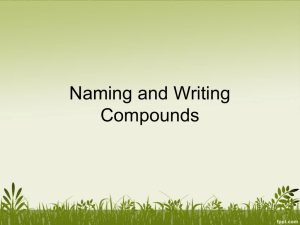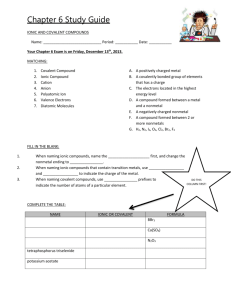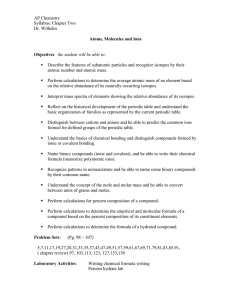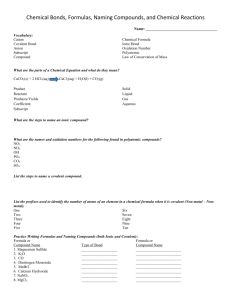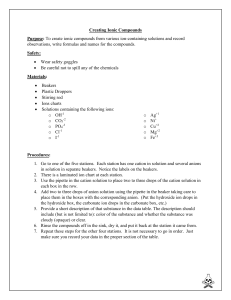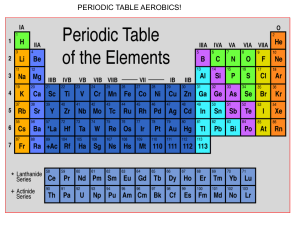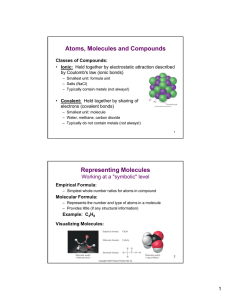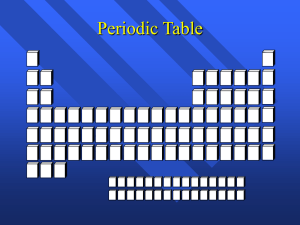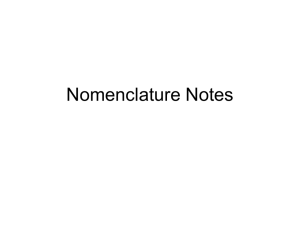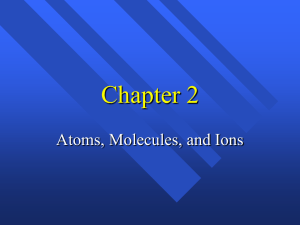Review questions *to be completed for Monday
advertisement
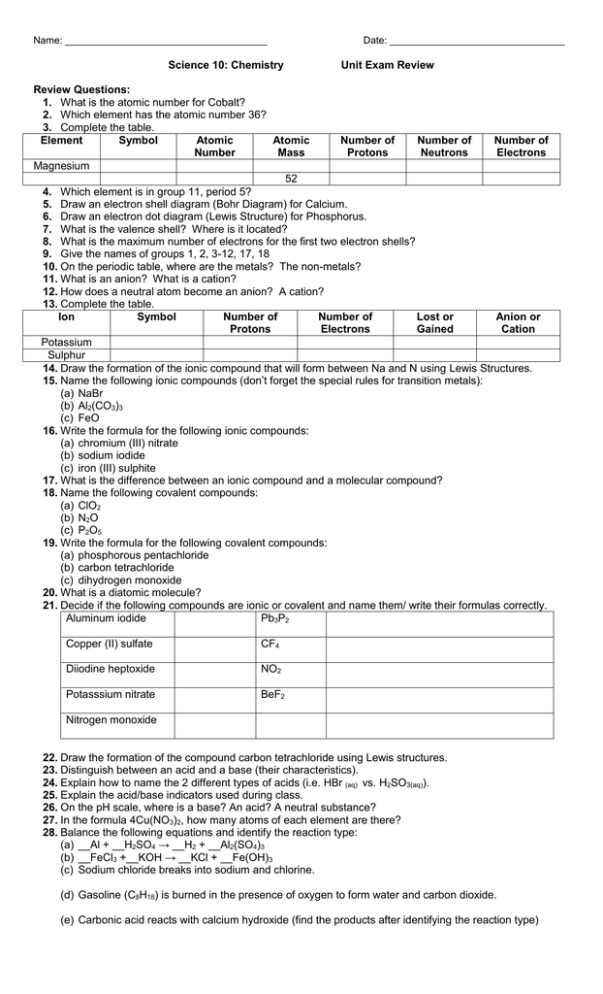
Name: _____________________________________ Science 10: Chemistry Date: ________________________________ Unit Exam Review Review Questions: 1. What is the atomic number for Cobalt? 2. Which element has the atomic number 36? 3. Complete the table. Element Symbol Atomic Atomic Number of Number of Number of Number Mass Protons Neutrons Electrons Magnesium 52 4. Which element is in group 11, period 5? 5. Draw an electron shell diagram (Bohr Diagram) for Calcium. 6. Draw an electron dot diagram (Lewis Structure) for Phosphorus. 7. What is the valence shell? Where is it located? 8. What is the maximum number of electrons for the first two electron shells? 9. Give the names of groups 1, 2, 3-12, 17, 18 10. On the periodic table, where are the metals? The non-metals? 11. What is an anion? What is a cation? 12. How does a neutral atom become an anion? A cation? 13. Complete the table. Ion Symbol Number of Number of Lost or Anion or Protons Electrons Gained Cation Potassium Sulphur 14. Draw the formation of the ionic compound that will form between Na and N using Lewis Structures. 15. Name the following ionic compounds (don’t forget the special rules for transition metals): (a) NaBr (b) Al2(CO3)3 (c) FeO 16. Write the formula for the following ionic compounds: (a) chromium (III) nitrate (b) sodium iodide (c) iron (III) sulphite 17. What is the difference between an ionic compound and a molecular compound? 18. Name the following covalent compounds: (a) ClO2 (b) N2O (c) P2O5 19. Write the formula for the following covalent compounds: (a) phosphorous pentachloride (b) carbon tetrachloride (c) dihydrogen monoxide 20. What is a diatomic molecule? 21. Decide if the following compounds are ionic or covalent and name them/ write their formulas correctly. Aluminum iodide Pb3P2 Copper (II) sulfate CF4 Diiodine heptoxide NO2 Potasssium nitrate BeF2 Nitrogen monoxide 22. Draw the formation of the compound carbon tetrachloride using Lewis structures. 23. Distinguish between an acid and a base (their characteristics). 24. Explain how to name the 2 different types of acids (i.e. HBr (aq) vs. H2SO3(aq)). 25. Explain the acid/base indicators used during class. 26. On the pH scale, where is a base? An acid? A neutral substance? 27. In the formula 4Cu(NO3)2, how many atoms of each element are there? 28. Balance the following equations and identify the reaction type: (a) __Al + __H2SO4 → __H2 + __Al2(SO4)3 (b) __FeCl3 +__KOH → __KCl + __Fe(OH)3 (c) Sodium chloride breaks into sodium and chlorine. (d) Gasoline (C8H18) is burned in the presence of oxygen to form water and carbon dioxide. (e) Carbonic acid reacts with calcium hydroxide (find the products after identifying the reaction type)

